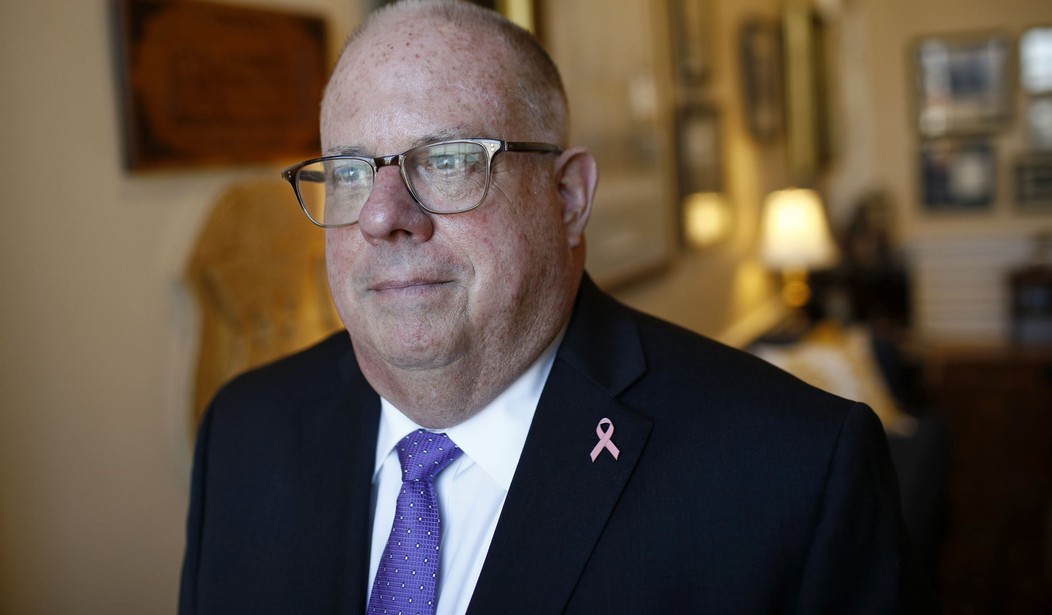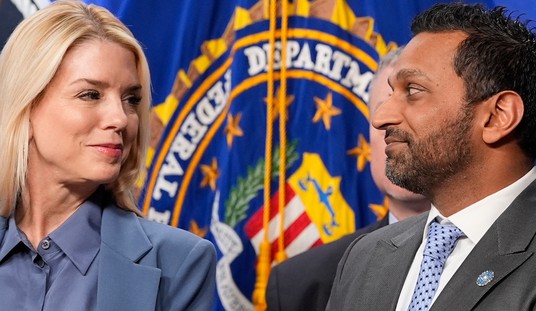Maaaayyyybeeeee, but don’t bet the farm on ADP’s jobs report as a precise bellwether. After April’s jobs report bust, which came in nearly 800K below expectations, economists have tried to prepare for another round of disappointing numbers. The jobs have arrived — but the workers haven’t, at least so far.
ADP’s projection for May shows a higher rate of growth, just missing the one-million mark for jobs added. However, they also overshot April’s report by more than double:
Private sector employment increased by 978,000 jobs from April to May according to the May ADP® National Employment ReportTM. Broadly distributed to the public each month, free of charge, the ADP National Employment Report is produced by the ADP Research Institute® in collaboration with Moody’s Analytics. The report, which is derived from ADP’s actual payroll data, measures the change in total nonfarm private employment each month on a seasonally-adjusted basis. …
“Private payrolls showed a marked improvement from recent months and the strongest gain since the early days of the recovery,” said Nela Richardson, chief economist, ADP. “While goods producers grew at a steady pace, it is service providers that accounted for the lion’s share of the gains, far outpacing the monthly average in the last six months. Companies of all sizes experienced an uptick in job growth, reflecting the improving nature of the [pandemic] and economy.”
That would indeed be a huge jump over April’s 266K level, but ADP didn’t project 266K in its last report. They projected 654K growth in jobs for that month, a very big miss to the optimistic side. As a trend, today’s report offers some hope that we have regained momentum in adding workers to the economy. The likelihood of the spike upward being that high seems small, however.
Today’s report on initial weekly jobless claims also offers a spot of normality, although only on its topline. The level has dropped below 400K and back into a range of relatively normal readings, if still a bit high for a recovering economy:
In the week ending May 29, the advance figure for seasonally adjusted initial claims was 385,000, a decrease of 20,000 from the previous week’s revised level. This is the lowest level for initial claims since March 14, 2020 when it was 256,000. The previous week’s level was revised down by 1,000 from 406,000 to 405,000. The 4-week moving average was 428,000, a decrease of 30,500 from the previous week’s revised average. This is the lowest level for this average since March 14, 2020 when it was 225,500. The previous week’s average was revised down by 250 from 458,750 to 458,500.
The advance seasonally adjusted insured unemployment rate was 2.7 percent for the week ending May 22, an increase of 0.1 percentage point from the previous week’s unrevised rate. The advance number for seasonally adjusted insured unemployment during the week ending May 22 was 3,771,000, an increase of 169,000 from the previous week’s revised level. The previous week’s level was revised down by 40,000 from 3,642,000 to 3,602,000. The 4-week moving average was 3,687,750, an increase of 22,750 from the previous week’s revised average. The previous week’s average was revised down by 10,000 from 3,675,000 to 3,665,000.
Yes, but. The topline number and level of continuing regular claims seem relatively promising, at least until we look at the continuing claims levels in all programs. For week ending May 15, the latest data available, we still have 11.8 million continuing unemployment claims in pandemic-relief programs. These are the programs that got extended by Congress in March and won’t run out until September. Notably, this number is roughly equivalent to the levels a year ago, although the distribution between the programs is different (and 18 million continuing claims were present in regular state programs at the time).
That’s a lot of workers sitting on the sidelines. There has been some migration into the workforce since last month, so we might see a better report on Friday than the one we got in April, but it’s tough to guess how much better. Dallas Fed chair Robert Kaplan seemed unconvinced last week that it would improve, in part because of the distorted incentives that are sidelining labor.
We might see a better number in June, however. States with Republican governors are canceling participation in pandemic-related unemployment benefits in an attempt to push workers back into jobs. CNBC estimates that it could boot as many as 3.7 million out of those programs:
Around 3.7 million Americans will be affected by states’ early withdrawal from federal unemployment programs, according to a CNBC analysis of Labor Department data.
In the past month, 25 states have announced plans to end pandemic-era benefits ahead of their formal expiration Sept. 6. Some states are ending the aid as early as June 12.
Maryland on Tuesday became the latest state to announce its withdrawal, effective July 3. The other 24 states are Alabama, Alaska, Arizona, Arkansas, Florida, Georgia, Idaho, Indiana, Iowa, Mississippi, Missouri, Montana, Nebraska, New Hampshire, North Dakota, Ohio, Oklahoma, South Carolina, South Dakota, Tennessee, Texas, Utah, West Virginia and Wyoming.
The affected workers are poised to lose a $300 weekly supplement to unemployment benefits. Most states are also ending benefits entirely for the self-employed, gig workers and the long-term unemployed.
The move in Maryland might be a bit of a surprise. Hogan isn’t exactly a die-hard conservative ideologue, but he clearly sees an economic sag ahead if workers don’t start filling job openings. Hogan reminded his citizens that these were supposed to be temporary patches to deal with government-imposed shutdowns on commerce, not a long-term entitlement:
Governor Larry Hogan today announced that the State of Maryland will discontinue enhanced pandemic federal unemployment benefits and reinstate work search requirements early next month.
“Our health and economic recovery continues to outpace the nation, and we have reached the benchmark set by President Biden of vaccinating 70% of adults,” said Governor Hogan. “While these federal programs provided important temporary relief, vaccines and jobs are now in good supply. And we have a critical problem where businesses across our state are trying to hire more people, but many are facing severe worker shortages. After 12 consecutive months of job growth, we look forward to getting more Marylanders back to work.”
It takes 30 day’s notice for states to opt out of these programs, which means we won’t see any direct impact in June from Hogan’s move. As a signal, however, it might prompt sidelined workers to start taking jobs now in order to get ahead of competition that will become fierce at the end of the month.
As for tomorrow’s report, stay tuned, but stay on the skeptical side as well. The fundamentals haven’t changed since April, and the stimulus money’s effects are now more remote. The topline should be better than April, but … not that much better.








